▲photo by AtsushiSekino
[Kawasaki Ninja 650 KRT Edition] Details and Test Ride Review
It has a full cowl and racy styling, but with a displacement of 649cc, even beginners can manage to get their hands on one. What kind of character does the Ninja have in the middle-class range? Former editor-in-chief of a motorcycle magazine for beginners, Yatagai Hiroaki, reports on his test ride.
Racy full cowl styling
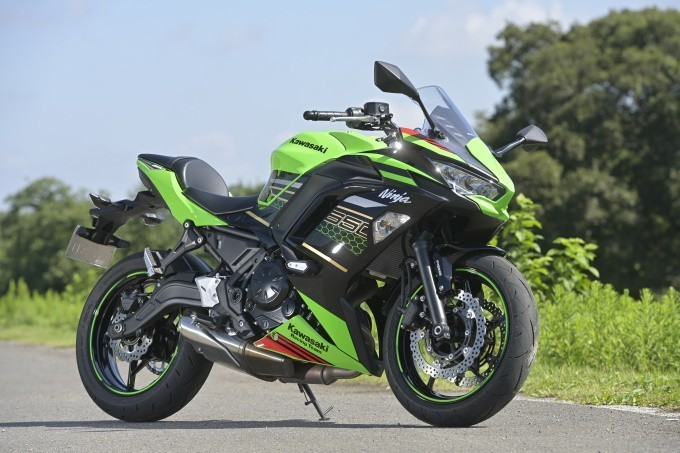
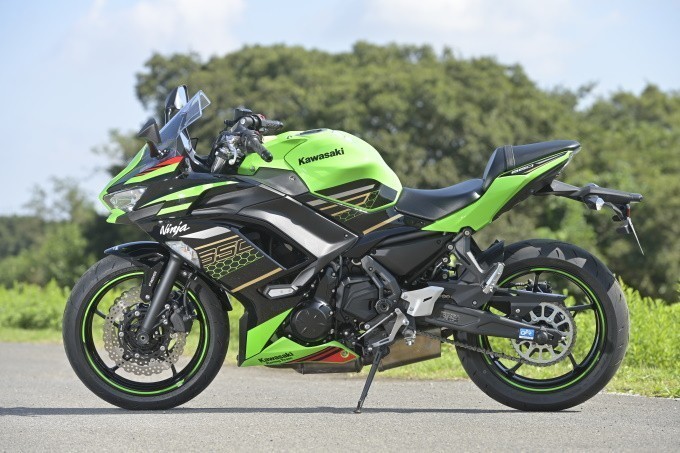
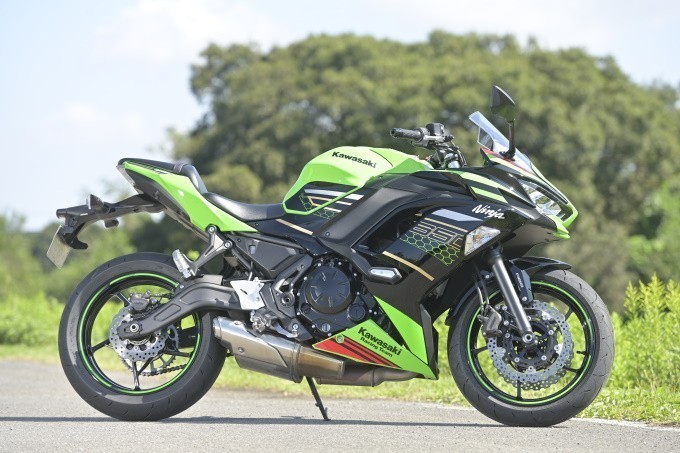

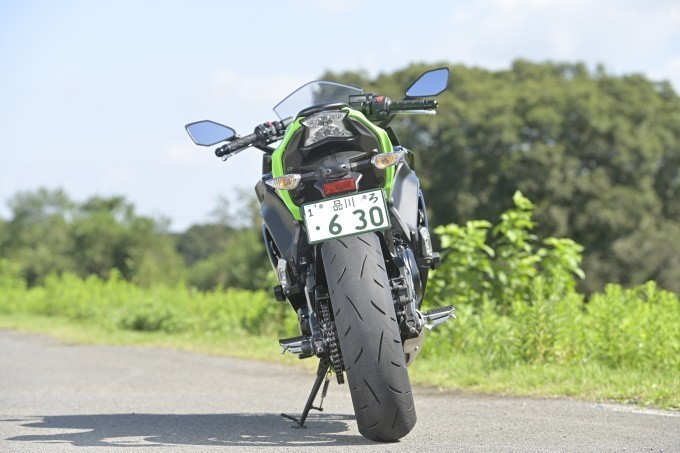
[Overall length/Width/Height] 2,055mm/740mm/1,145mm
[Curb weight] 194kg
[Wheel Distance] 1,410mm
[Minimum Ground Clearance] 130mm
The Ninja series has a wide range of models from 250 to 1000cc. The Ninja 650's styling is similar to that of the 400 and 250 motorcycles, but it's also more compact. Instead of the standard color scheme, we rode the KRT Edition, which features the same color scheme as the Ninja ZX-10RR in the World Superbike Championship.
[Selling Price]
Pearl Blizzard White: 880,000 yen (tax included)
Lime Green and Ebony (KRT Edition): 902,000 yen (tax included)
*As of November 2020
Slim and comfortable position with good foot grounding
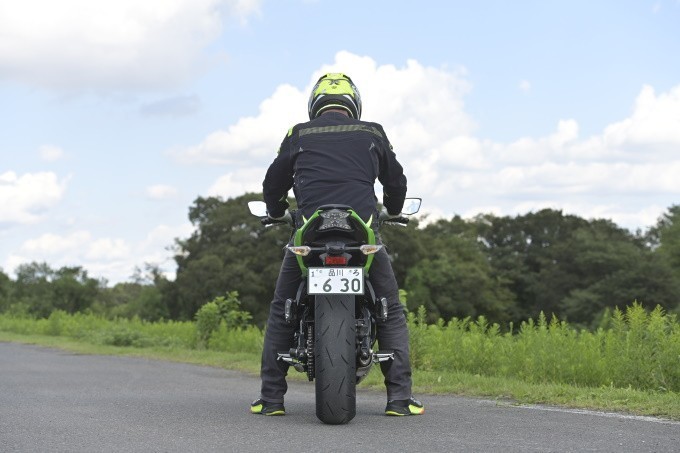
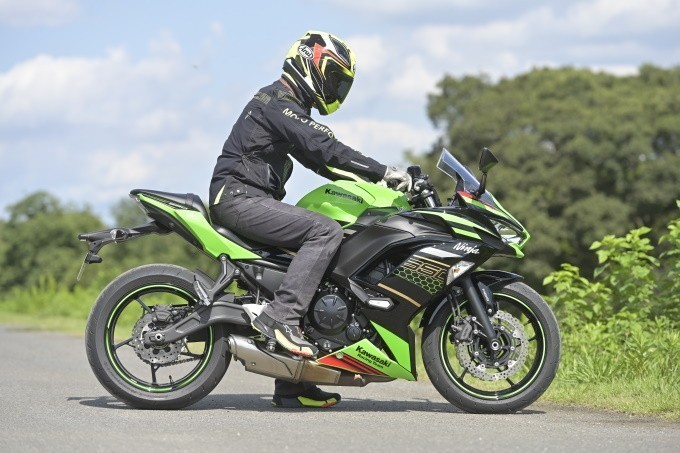
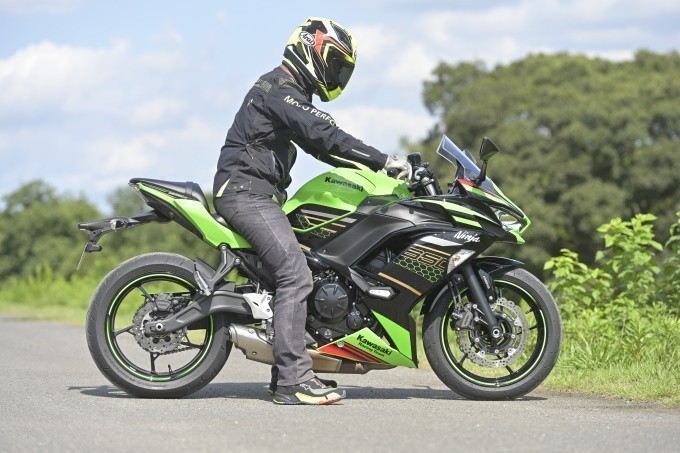
[Seat Height] 790mm
The combination of the slim bodywork and the 790mm seat height makes the motorcycle very comfortable to stand on. The handlebar position is surprisingly high for the motorcycle's styling, and the forward lean is not too tight. The knee bend is also relaxed, making it a comfortable position for touring.
The parallel-twin feel is fun to ride -Actual Riding Review
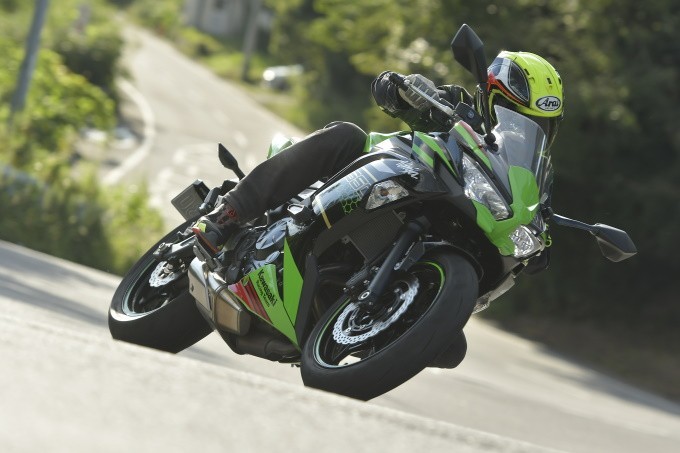
The body, the engine, everything is so straightforward and easy to handle!
Most Kawasaki motorcycles are either Ninjas or Zs, with the rest in the Versys or W series. The full cowl models are all named Ninja. There are currently eight models in the 250cc to 1000cc class, with the Ninja 650 being the middle displacement. The Ninja 650 is the smallest of the big motorcycles.
What's complicated about this Ninja series is that everything is a Ninja, from the crunchy sports model, a machine for the track, to the touring machine. When you actually ride the Ninja, you'll see that the two directions are distinctly different. Of course, a machine designed for the circuit has a high-powered, high-impact chassis, but it's also a bit difficult to handle on the street. Touring machines are usually easy to ride on public roads, and are easy to handle in any situation, and does not cause tiredness easily. However, if a rider who is going to get a driver's license looks at the photo, he will not be able to distinguish the character of the machine.
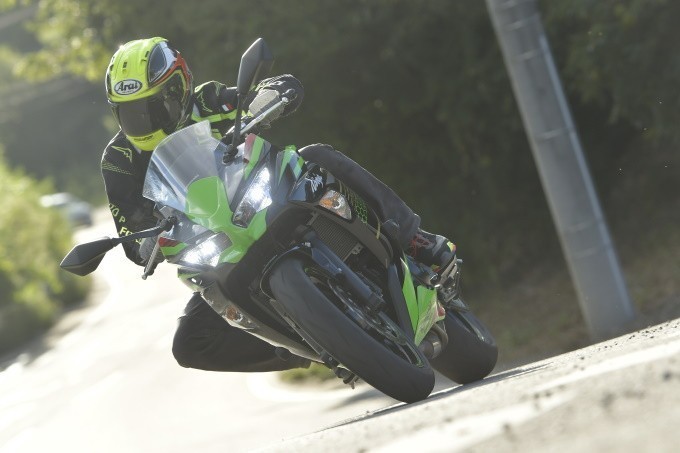
Prior to the 2017 model change, the Ninja 650 was more of a touring motorcycle, both in design and character, but it has been reshaped with a major overhaul of the frame and power characteristics. The frame and power characteristics have been overhauled and reshaped. The Ninja 650 has been restyled and reshaped from a tourer to a sports tourer.
One of the most appealing features of the Ninja 650 is its simple parallel-twin engine. While most parallel-twin engines these days use a 270-degree crank for exciting power output, the Ninja 650 uses a 180-degree crank. The 180-degree crank parallel-twin engine is characterized by its extended output characteristics. The output characteristics are flat from the low to mid to high rpm range when the throttle is opened. It is often said that "the more you open the throttle, the more it blows" and this is exactly how it feels. It's easy to predict how much power will come from the accelerator pedal, making it easy to control and easy to handle for everyone. Moreover, the 649cc engine displacement is more than enough for acceleration and maximum speed. Currently, the maximum highway speed is 120km/h. The Ninja 650 is being prepared to be ramped up to 2.5 mph, but the Ninja 650 will be able to handle that speed range with plenty of room to spare.
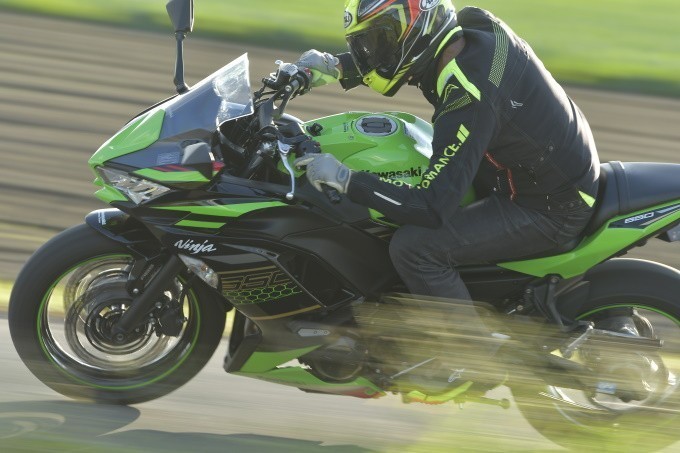
Motorcycles are unstable vehicles. In addition, it is easily affected by the weather, and if it rains, it will make you nervous about driving. What if it rains on your trip? What if you had to ride in the rain on your way to work or school? Exciting motorcycles can be fun to ride, but they can also be a bit tricky to handle when you're nervous. In such a case, you may feel like "I'm not going to ride it today". But with the Ninja 650 as your companion, you'll be able to ride with confidence and ease. If you want to ride a motorcycle every day, you need a motorcycle that's easy to ride.
Meters & Lights
Lights

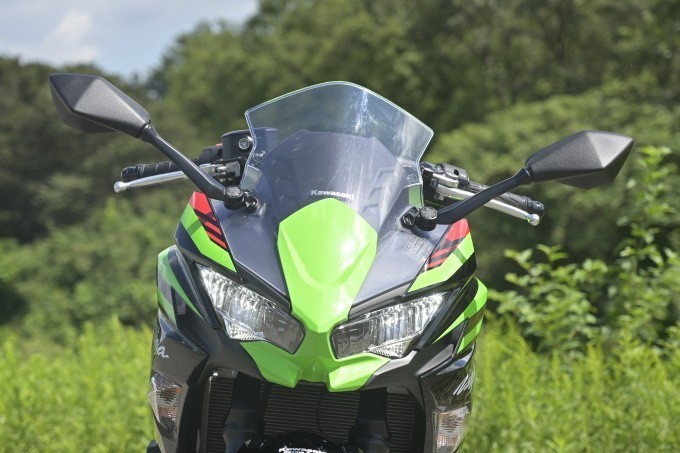
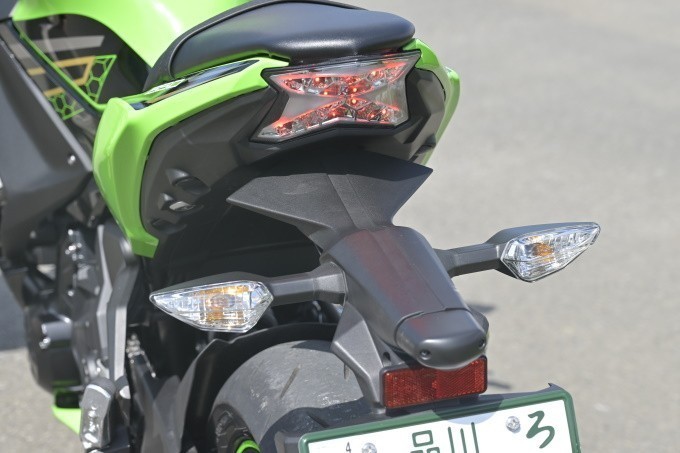
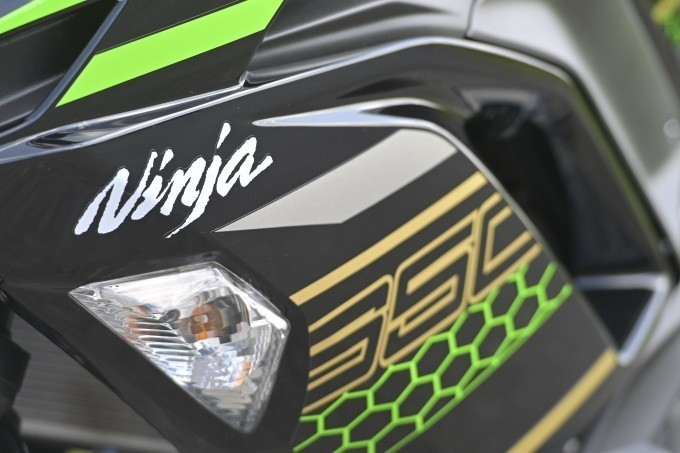
The Ninja Lux's front cowl features a dual-lens headlight, with the taillights also LED. From the 2020 model, the taillights are also LED, while the indicators are bulb-type and the front side is built-in.
Meter
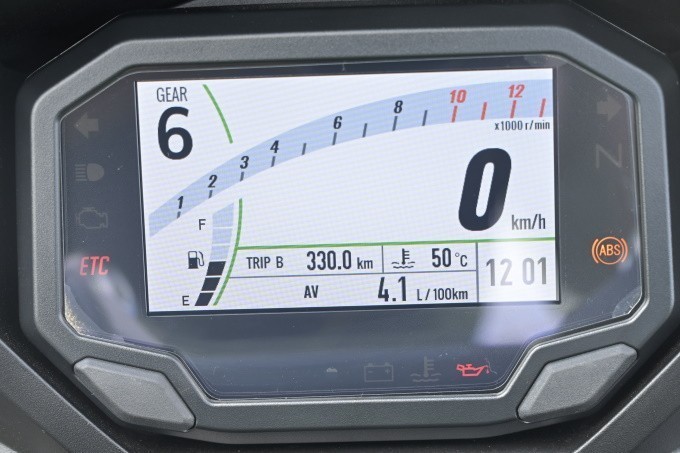
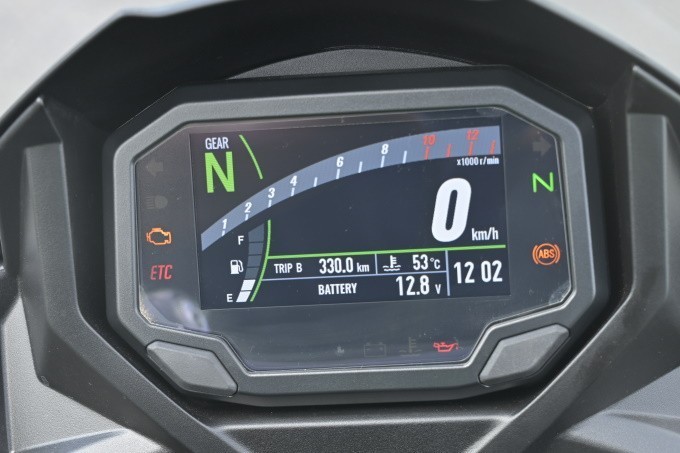
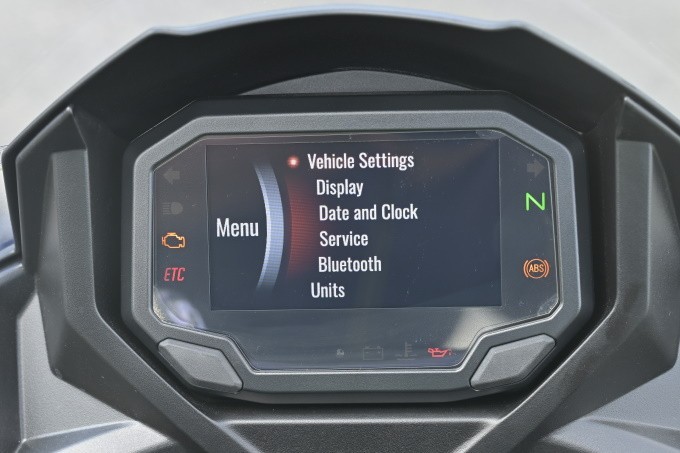
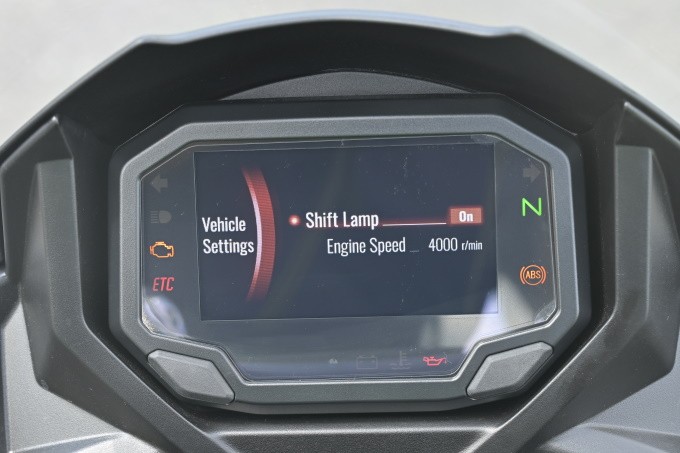
Displayed items
Speed/Engine RPM/Fuel Level/Clock/Odometer/Trip Meter x 2/Gear Position/Instantaneous Fuel Consumption/Average Fuel Consumption/Cruising Range/Average Vehicle Speed/Elapsed Time/Voltage
The full LCD gauges are new to the 2020 model. The backlighting can be selected from white or black, and the brightness can be switched between four levels. In the meter's setting mode, it is also possible to change settings such as the shift indicator's rpm.
Bluetooth communication function
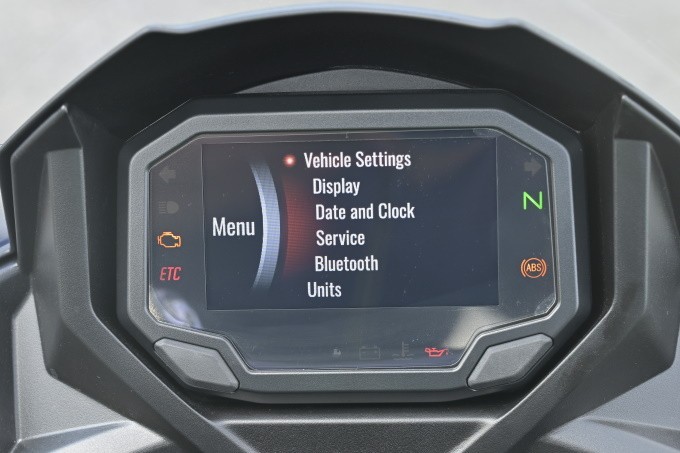
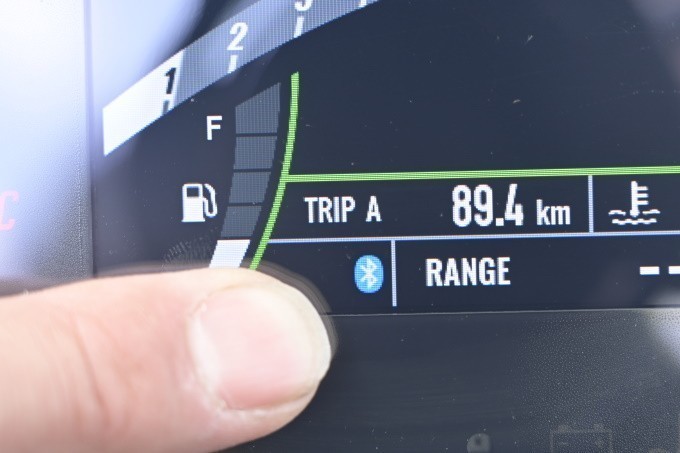
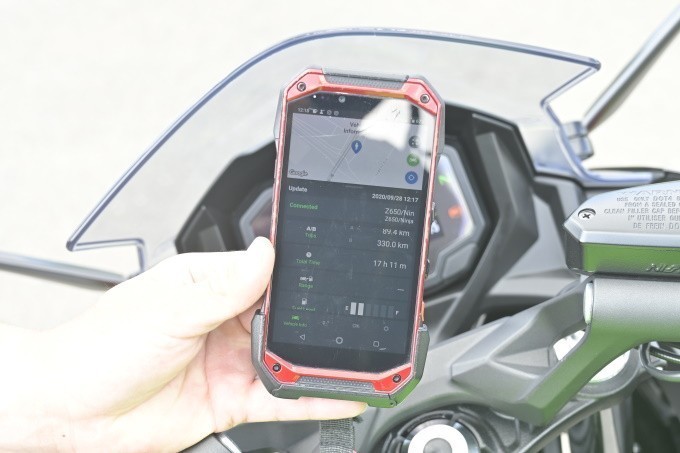
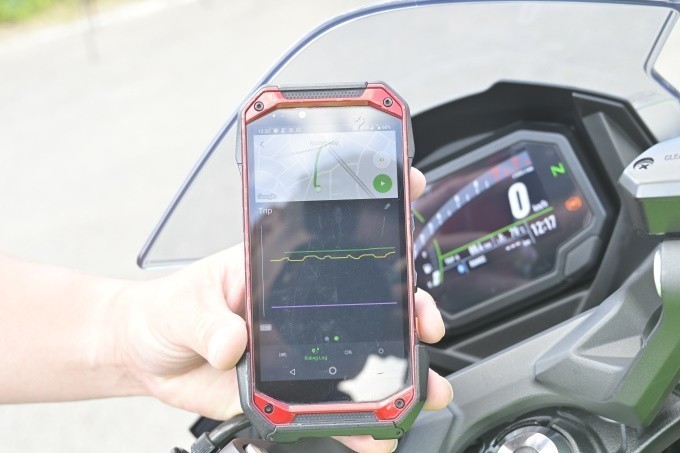
Starting with the 2020 model, the motorcycle is also equipped with a Bluetooth connection to the Rideology smartphone app, a feature Kawasaki has been focusing on recently. This allows the user to check the vehicle's fuel level, range, and other data on the smartphone (data is final when the ignition is turned off). In addition, by riding the app and driving the vehicle, the user can log data, which is displayed on a map showing where the vehicle has been driven, and analyze the vehicle's performance by checking water temperature, gear position, speed, and other data on a time axis graph.
Driving performance
Engine
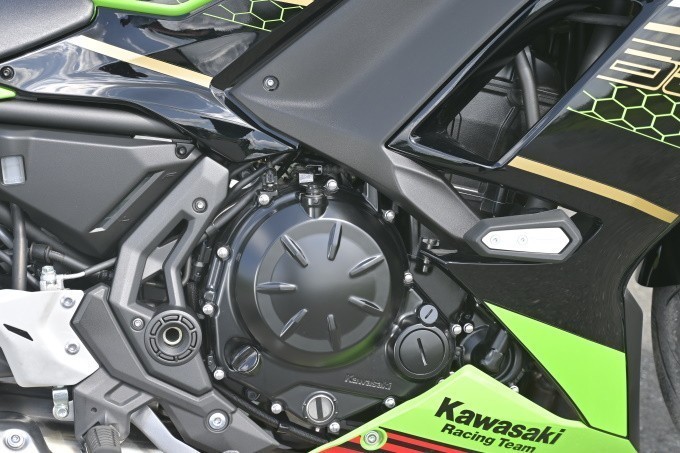
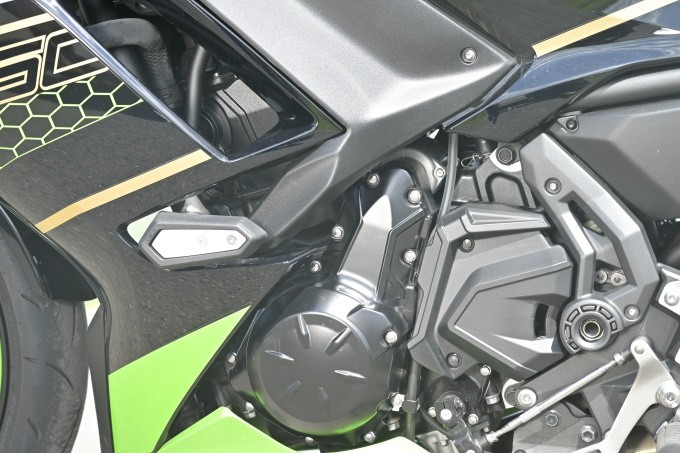
[Engine type/Displacement] Liquid-cooled 4-stroke DOHC 4-valve parallel twin-cylinder/649cc
[Maximum output] 50kW/8,000 rpm
Maximum torque] 63Nm/6,700rpm
This is a parallel-twin engine with a 180-degree crank where the left and right pistons move up and down alternately and the combustion timing is equally spaced. This engine is not the 270-degree crank of the current trend, but it is characterized by a smooth and straightforward blow-off. The fact that the maximum torque is achieved at 6,700rpm, while the maximum output is achieved at 8,000 rpm, shows that this is a very spirited engine.
Handlebar
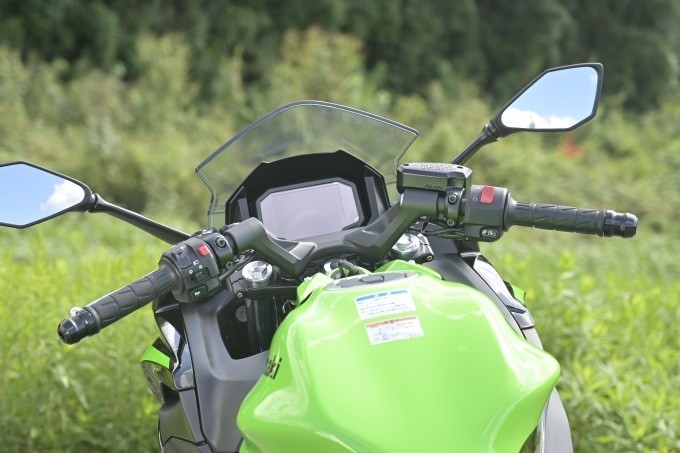
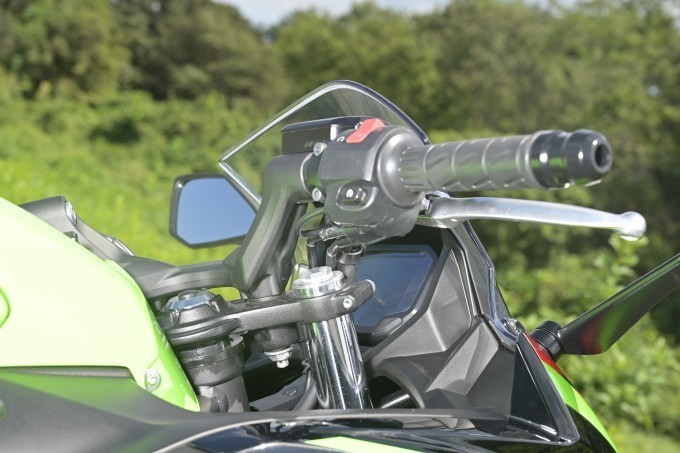
The base of the handlebar is mounted on the Ninja 650 top bridge. The base of the handlebar is mounted on the Ninja 650's top bridge, whereas a normal separate handlebar clamps to the top of the front fork. This gives the Ninja 650 a higher, more comfortable handlebar position, and the rubber mounts ensure comfort.
Foot grounding
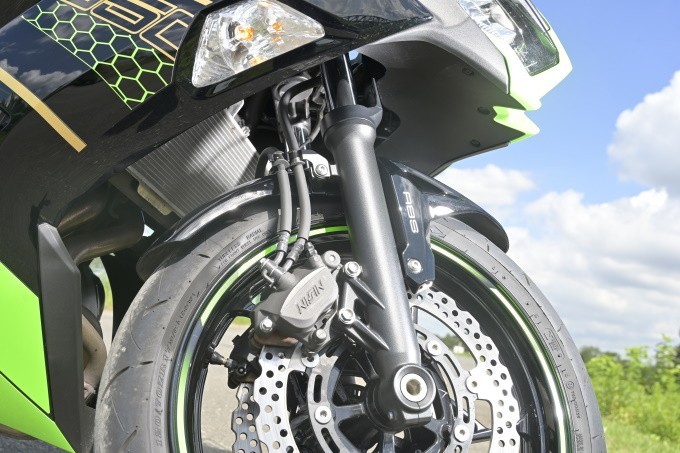
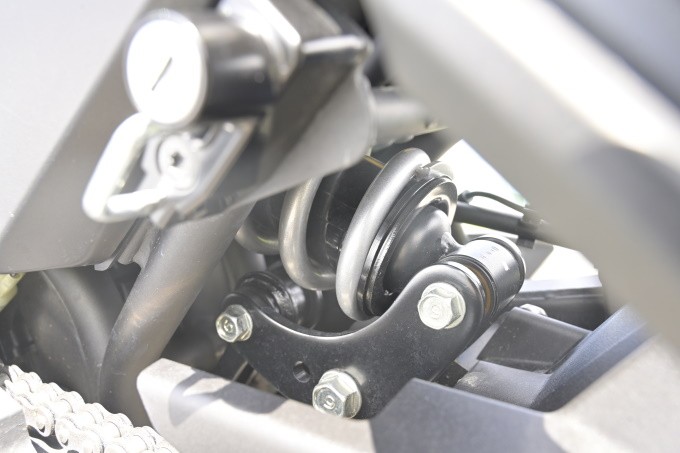
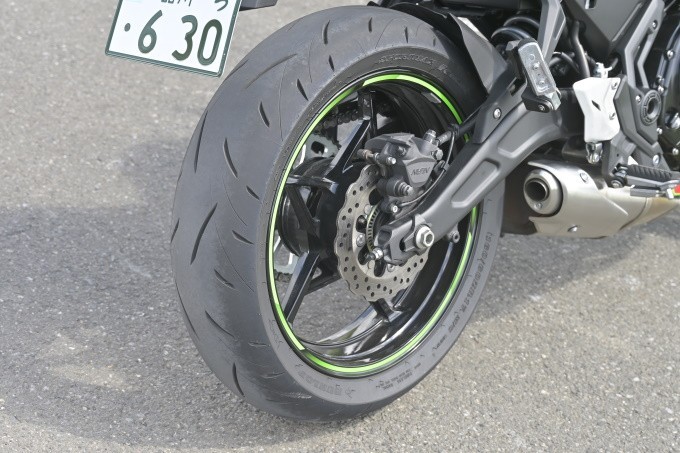
[Tire size] Front: 120/70ZR17, Rear: 160/60ZR17
Starting with the '20 model, Dunlop radial tires and Sports Max Road Sport 2 are used. The upright front fork has a 41mm inner tube diameter and 125mm of stroke. The handlebar angle is 32 degrees, which is quite reasonable for a full cowl model. The rear suspension is a horizontal backlink rear suspension unit with 130mm of wheel travel.
Brakes
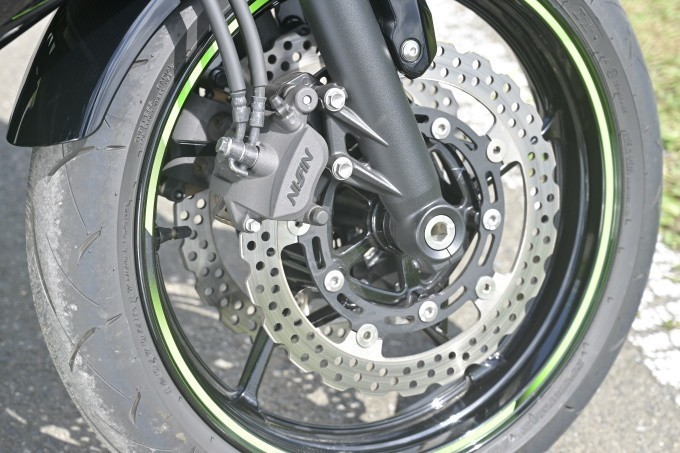
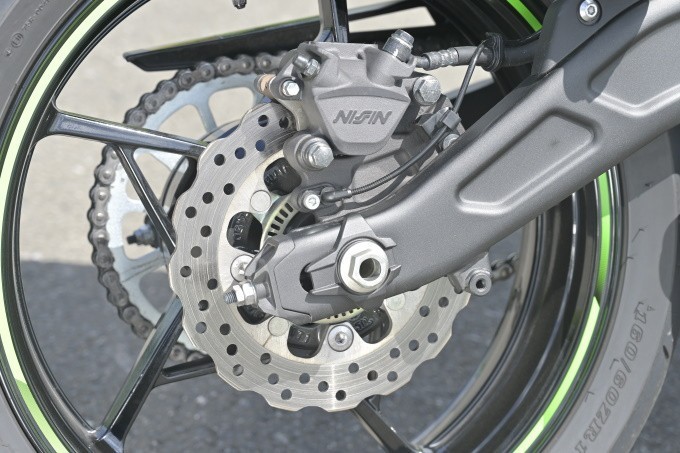
[Front] Nissin single-pressed 2-pot/φ300mm double disc
[Rear] Nissin single-pressed 2-pot/φ220mm disc
The front and rear petal discs feature floating mounts that prevent distortion when the discs expand due to heat build-up and prevent the brakes from losing touch, while the ABS system allows you to use the brakes with confidence even on rainy days.
Exhaust system
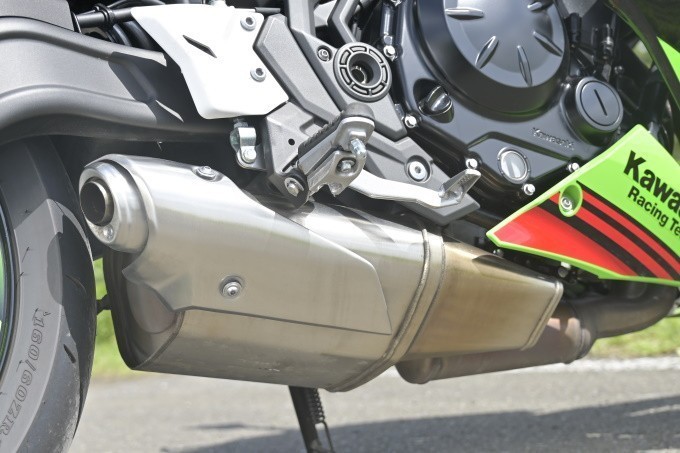
The Ninja 650 is Euro 5 compliant for the 2008 model year, and the short exhaust system style, with the silencer and expansion chamber housed underneath the engine, contributes to cleaner exhaust emissions and mass concentration by securing the expansion chamber.
Swingarm
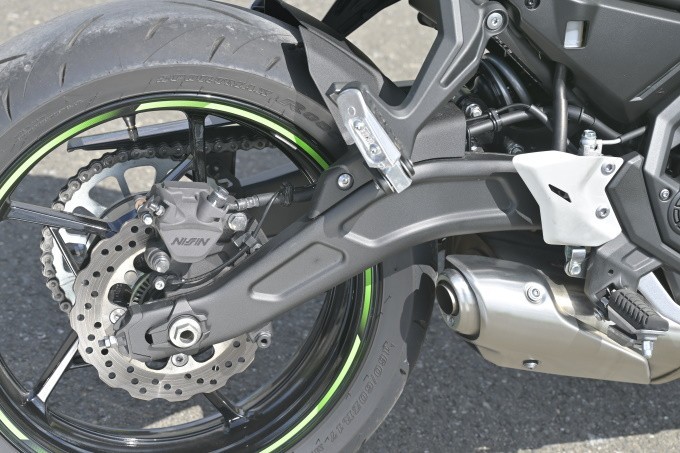
It features a swingarm with different shapes on the left and right sides. The motorcycle was revamped in 2017 in pursuit of a better ground feel and nimble handling when cornering due to the supple bodywork, including the mainframe.
Footpeg
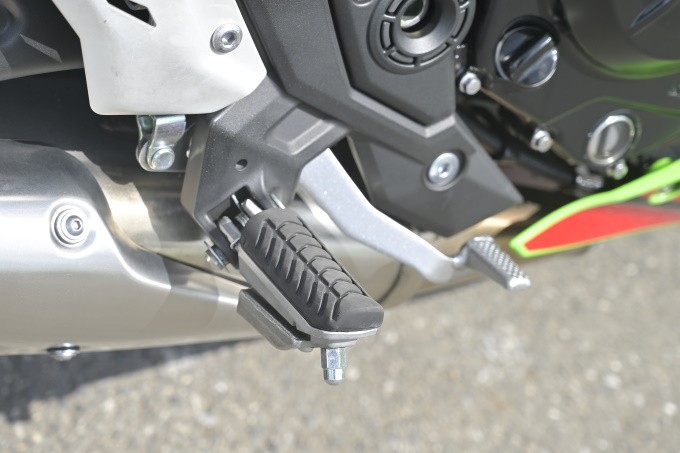
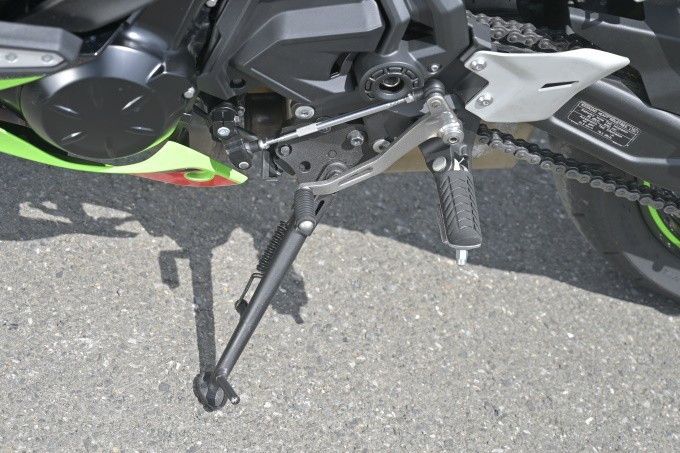
Although the styling is sporty, the footpegs are rubberized and the underside of the step is equipped with a balancer to prevent vibration. It's not a crunchy sports model, but more of a comfort-oriented touring character.
Utility introduction
Fuel tank
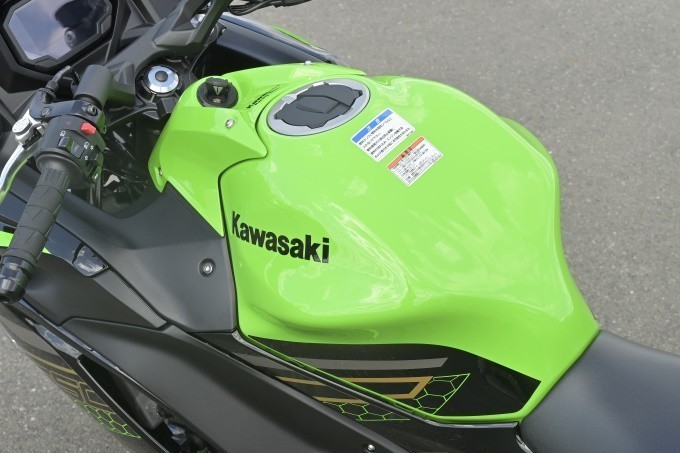
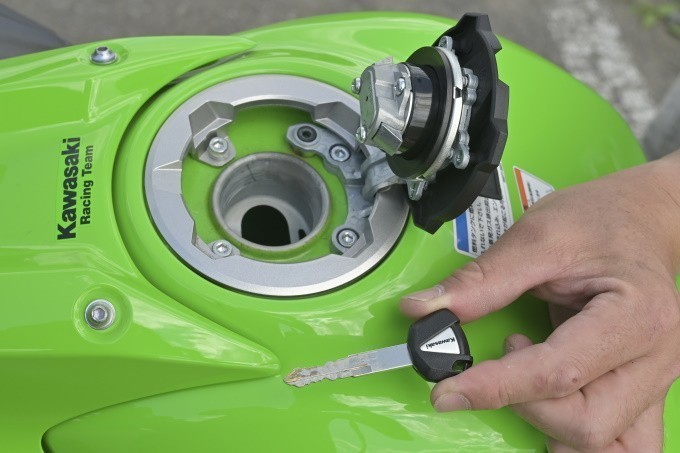
[Fuel capacity] 15L
It has a capacity of 15L and fuel is regular fuel specification. The tank cap is a hinge type for convenient refueling, and the tank material is steel, so a magnetic tank bag can be used.
Seat
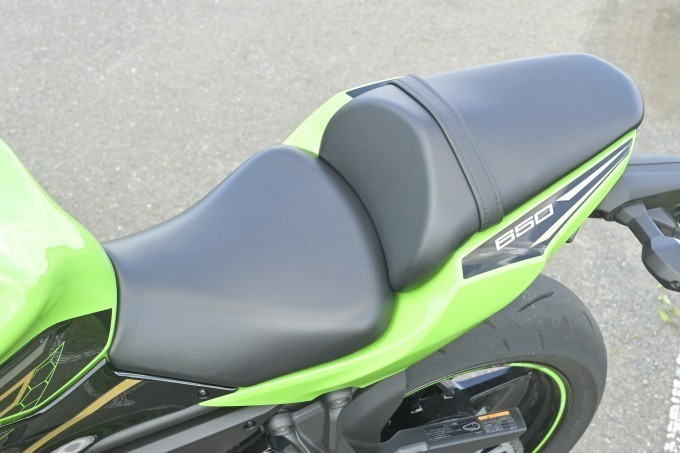
The seat height is low at 790mm, and the seat shape is narrower at the front for better legroom. The thicker seats from 2017 and earlier are more comfortable, but a higher seat with an extra 30mm is available as a factory-installed option.
Under the seat
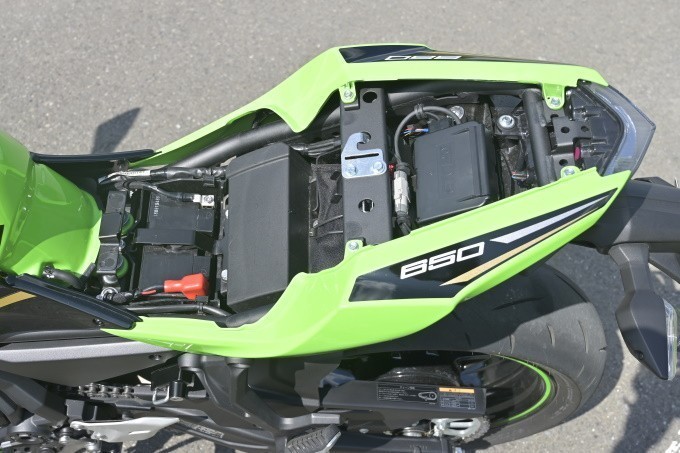
The battery, canister, and ETC space almost fill the space under the seat, and there is almost no loading space at all with barely enough room for onboard tools and documents. By the way, ETC2.0 is standard equipment for Japanese models.
Load carrying capacity
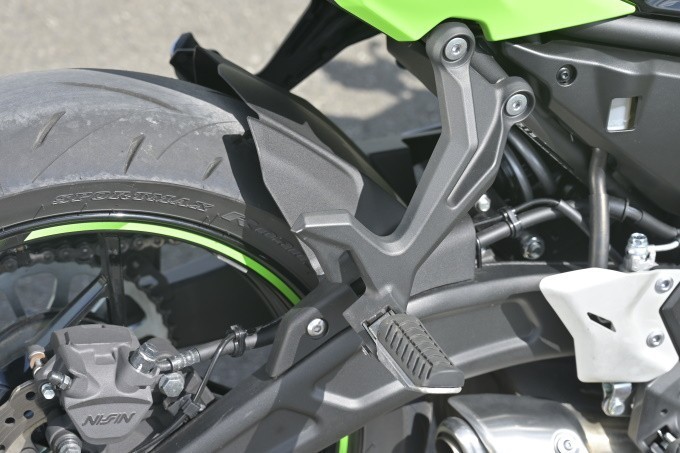
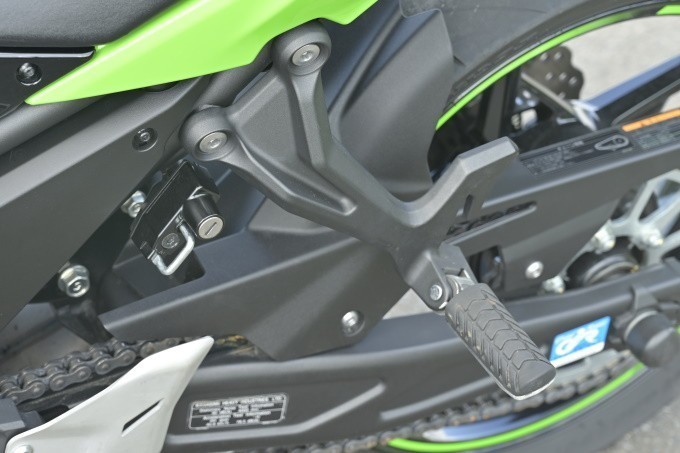

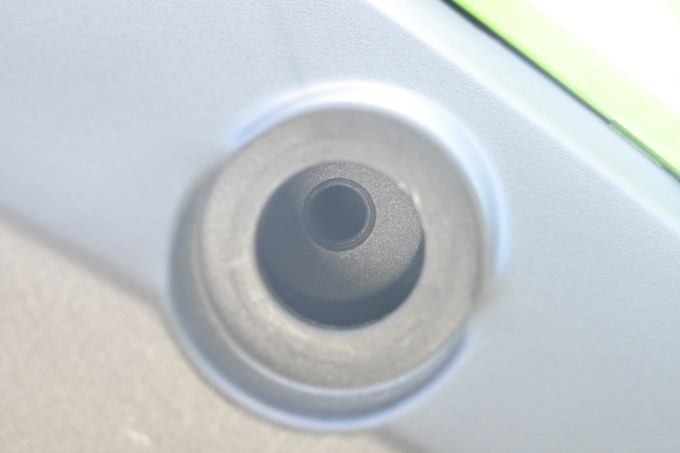
The pillion footpeg is equipped with a cargo hook, but there is no cargo hook on the license plate bracket side. However. There is an M8 screw hole on the backside of the seat for the optional pannier case bracket. The left pillion footpeg is equipped with a helmet holder.
Windscreen
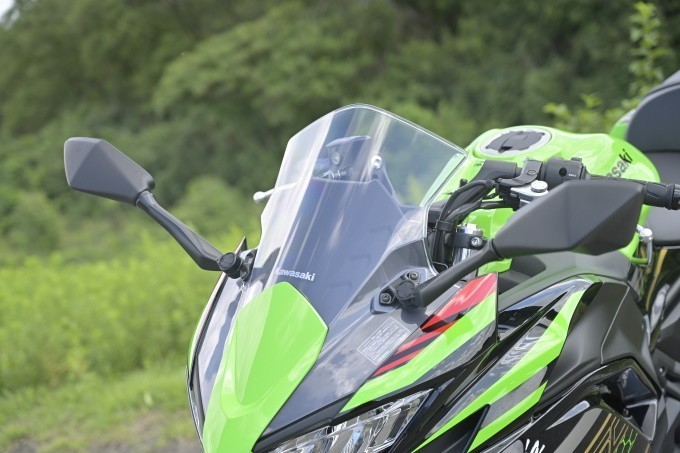
While the handlebars are high, the windscreen is set low for design reasons. If you're looking for solid wind protection at highway speeds, you'll want to use the large windshield, which is an 80mm increase over the factory option.
DC power socket
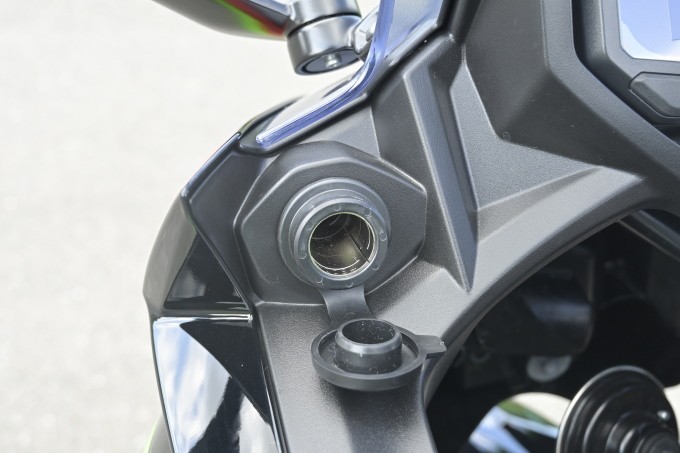
The test ride was fitted with optional parts such as frame sliders to reduce damage in the event of a fall and a DC power socket that can be used with an accessory socket to conveniently charge mobile phones and other devices.
Lever adjuster
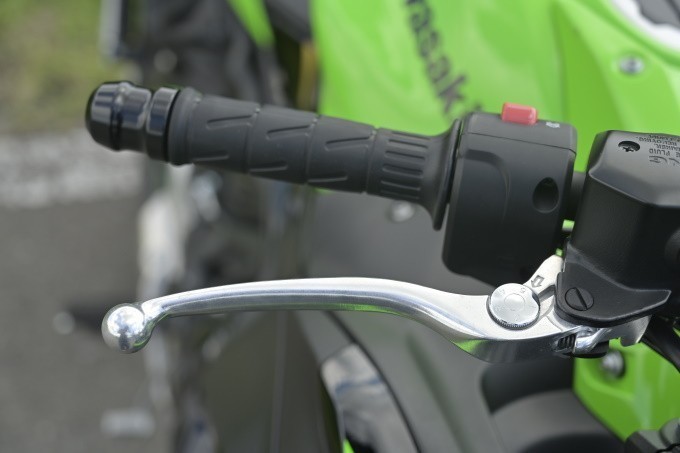
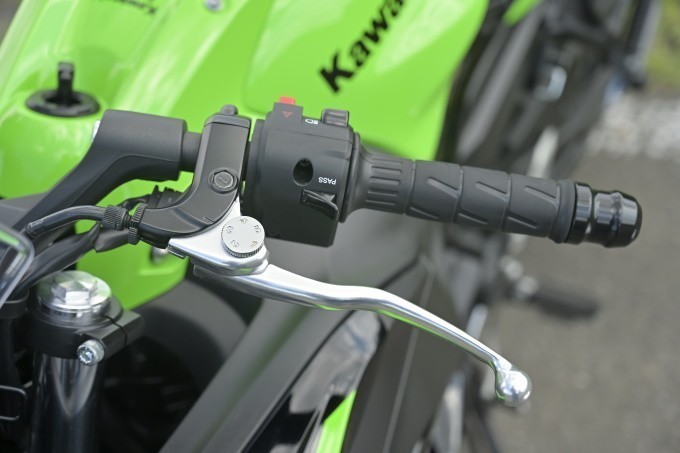
Kawasaki's signature lever adjuster lets you change the width of the lever grip to suit your preference. Both the right brake lever and left clutch lever have five settings. It's a simple but important feature, as the levers are used thousands of times.
Switch box
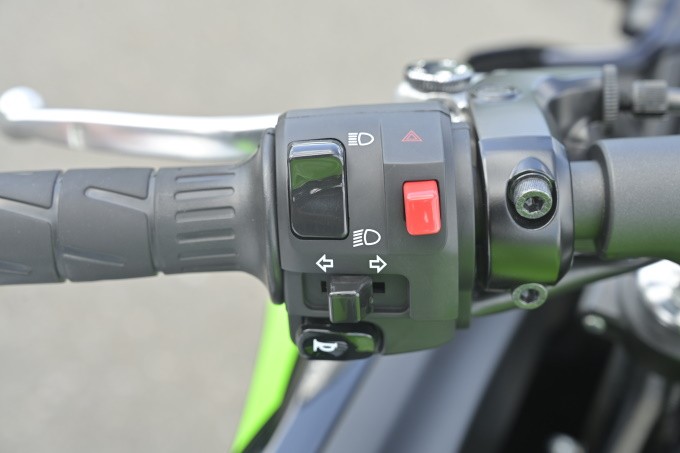
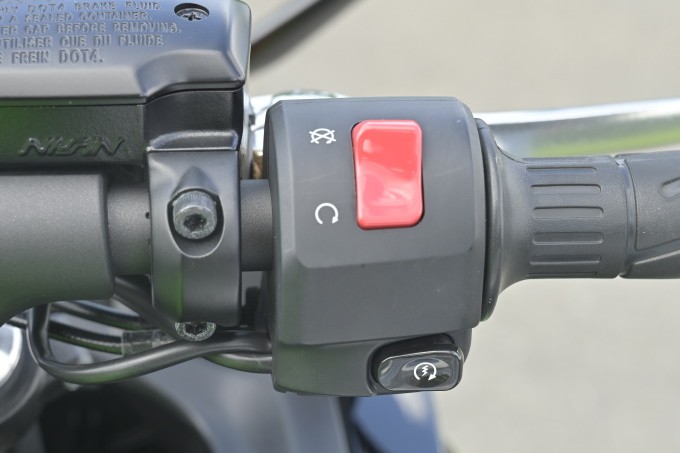
[Right] Starter switch/kill switch
[Left] Switching headlights/Passing/Blinker/Horn/Hazard
Although there is Bluetooth communication, there are basically no gimmicks such as traction control or mode switching, and the switch box operation is quite simple and straightforward.
Summary
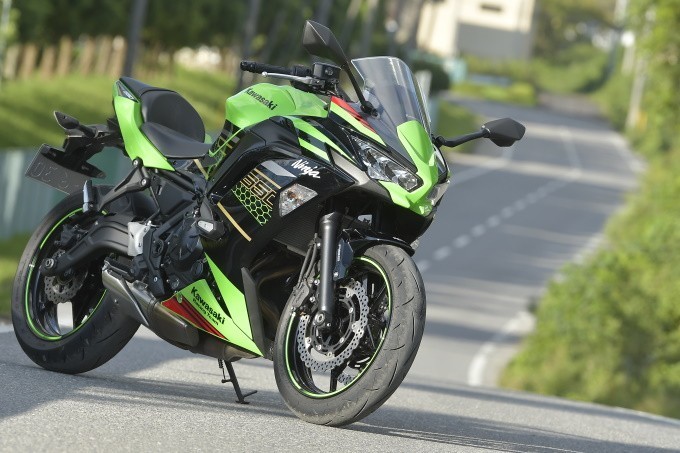
Just in time for a big motorcycle debut!
Despite its racy styling, the Ninja 650's compact size and upright stance make it easy to ride in town, on mountain passes, on the highway, and on just about any other road you can think of in Japan. The Ninja 650's compact size and upright stance make it easy to ride in town, on mountain passes, and on the highway. In addition, it is said that many riders nowadays obtain a large motorcycle license instead of a standard motorcycle license. If this is your first time on a big motorcycle, the Ninja 650 is the perfect companion to help you get started.



